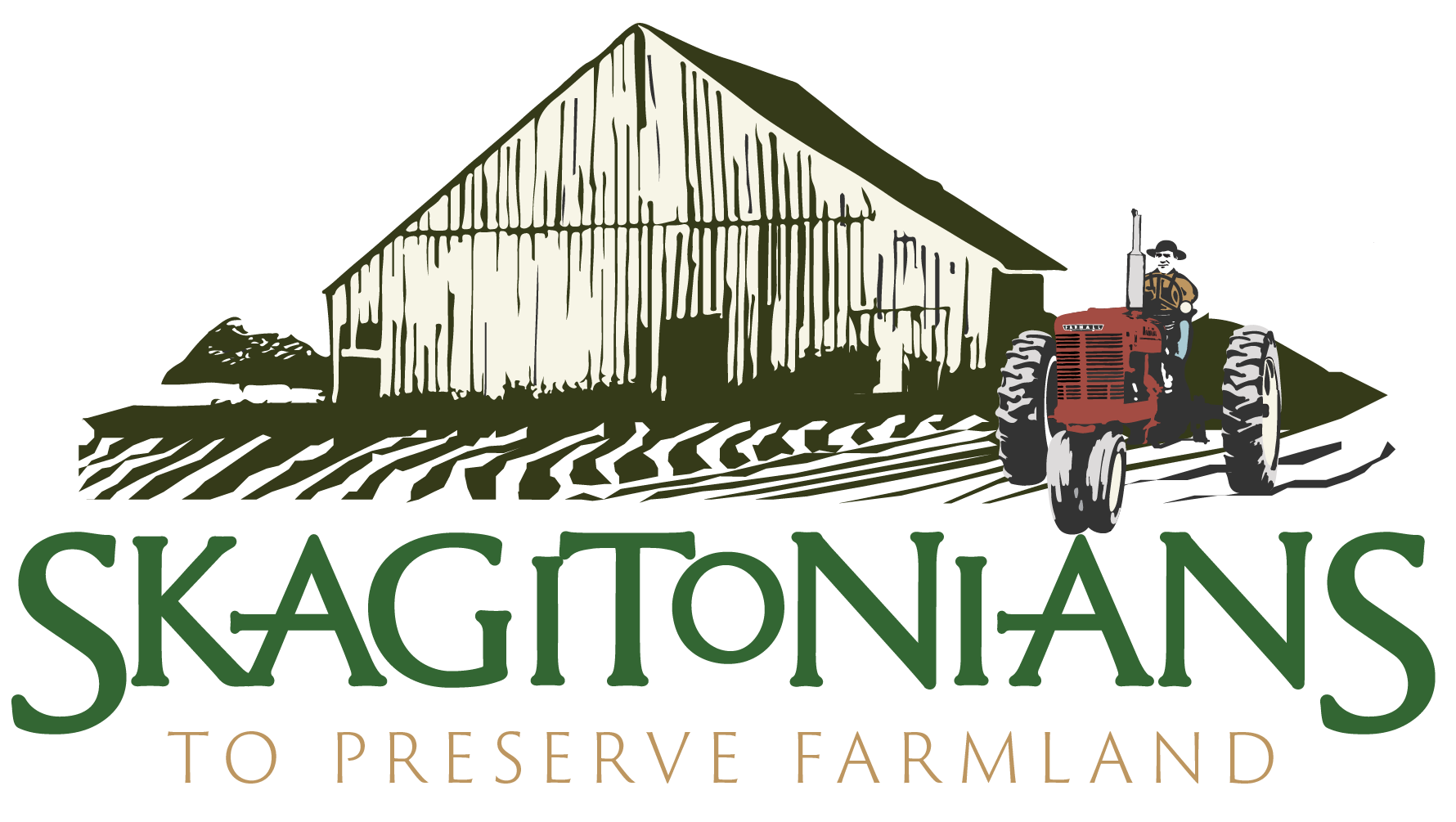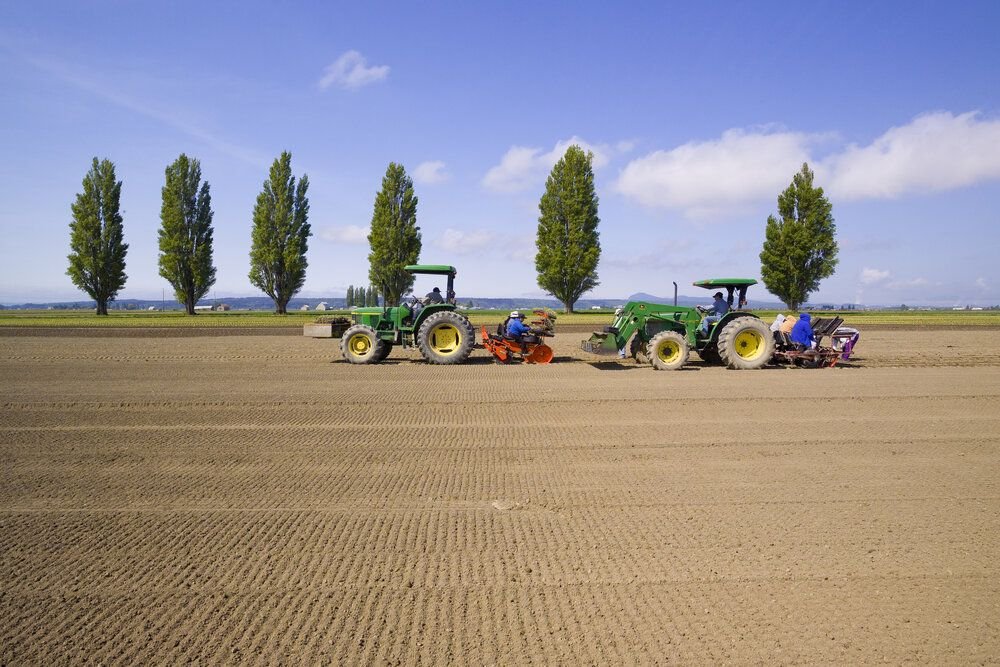Seeds and Change
When Jesse Galbreath started growing spinach seed a decade ago, he did not anticipate having to irrigate often. In decades past, seed farmers in the Skagit Valley had not typically needed to. His family operation, Lazy J Farm, purchased one irrigation reel intending to use it occasionally on small acreage of forage.
“When we bought it, it had blackberry vines on it,” Galbreath said, laughing. “We called it the Mayflower because we said it came over on the Mayflower.”
Now, irrigation has become something Galbreath and other Skagit seed farmers rely on regularly. More frequent irrigation is not the only change this industry faces as they confront a future climate bound to be different from the past.
Skagit seed farmers are adapting to these and other challenges, evolving as farmers continually do to ensure they continue to produce high-quality crops.
Photographer: Gary L. Brown
Galbreath grew up on a small hobby farm in Skagit County, mainly raising beef cattle and orchard grass. About fifteen years ago, he and his twin brother started raising vegetable seeds — spinach, beet, cabbage, brussels spouts — along with some orchard grass and other forage crops. Now, their Lazy J Farm works about 1,100 acres.
In Galbreath’s relatively short time as a seed farmer, he has already noticed changes. “The summers are definitely hotter and drier,” he said. This has forced Lazy J Farm and other farmers to adapt.
Because of regional norms, Galbreath did not expect much irrigation when he started. That is changing and making the job harder.
Growing seed is complicated because fields have to be separated by a distance to prevent cross-pollination that can ruin a crop. Ensuring farmers have access to fields the required distance away is a stressful part of the work, but Skagit farmers have developed a strong tradition and community that accommodate these special demands.
Cabbage Seed Planting photo by Vince Streano
Now, in addition to balancing the proper distance, Galbreath and other seed growers have to also make sure they can find fields where water is available, because they plan to irrigate every year. It is one more logistical challenge in an industry with many.
In 2017, Lazy J Farm faced a crisis and lost money by not having their own irrigation equipment. Other farmers helped, but it was insufficient. They invested in their own. “It’s just too risky if we don’t have the ability to water,” Galbreath said.
A system — pipe, fittings, pump, reel, and so on — that can water a 40-acre field costs around $100,000, but costs keep going up. These irrigation systems are mobile but are prone to fail. “Things can break down for a whole variety of reasons,” said David Wallace of Wallace Farms. “And when that happens, there’s no way to know that it has happened.” Labor is wasted cleaning up after a flood caused by a system error, for instance, or driving around checking on systems.
Wallace developed a technological solution and business, FarmHQ, about five years ago that relied on cellular monitoring that could communicate between the reel, the pump, and a farmer’s phone. It can shut down the systems automatically in case of some accident. The system allows farmers to monitor and control their irrigation and apply water more precisely and efficiently, which also helps meet regulatory requirements for pumping out of the Skagit River.
As irrigation becomes more critical to Skagit agriculture in the future and with competing demands rising, technical and other adaptations like this are sure to be incorporated into regular operations when in years past it would have been uncommon.
Harvesting Beet Seed- Lohman Farms
Water is one of the biggest changes for future climate scenarios in Skagit. Climatologists and others studying the region expect the hotter, drier summers that Galbreath has noticed. Winters are expected to be wetter too.
“From a soil science perspective, that means we’re asking a lot of our soils,” said Dr. Gabe LaHue, a soil scientist at WSU’s Northwestern Washington Research and Extension Center, “because we’re asking them to infiltrate more water in the winter, and we’re asking them to store more water for use in the summer so we can hopefully prolong that irrigation as much as possible.”
The costs of irrigation are not insignificant and water supply is not infinite, so anything farmers can do to minimize the need for irrigation helps them. That includes tillage methods, cover crops, and crop selection.
Besides access to water, seed farmers face challenges as climate changes affect the continued viability of particular genetic lines.
Most seed crops are hybrid. Both parent lines have to be capable of thriving in the same conditions. Seed companies have to conduct many trials to be sure both genetic lines will be suitable for climatic conditions. Each line is inbred for genetic purity, which makes them more sensitive to extremes. If climate change produces increased likelihoods of extreme weather, those pure parent lines are more vulnerable.
“The grower who plants the hybrid has a much more rigorous hybrid vigor versus the seed grower who has to deal with parent lines that are inbred and much more sensitive to extremes,” said Dr. Lindsey du Toit, a plant pathologist also working at NWREC. “So I think climate change has really impacted seed producers because they’re having to grow parent lines that typically are inbred. Inbred by nature means often reduced tolerance to extremes.”
There are other challenges, too. “As we shift to warmer, drier summers, we see certain diseases become less problematic and other diseases become more problematic,” said du Toit. The same is true of pests. Paying attention to these trends helps pathologists like du Toit develop research to anticipate how to respond to future scenarios. There is much to prepare for.
Every season presents farmers new challenges, so adjusting to an evolving climate is not altogether new, and it is likely to generate benefits. “Trying to manage strategically for climate change, I think will help us regardless of what happens,” said LaHue. Adapting to change and fine-tuning practices can ensure Skagit farmers continue providing high-quality products in the face of short- and long-term transformations.
Cabbage Seed photo by Carol Havens
By Adam Sowards: info@skagitonians.org




